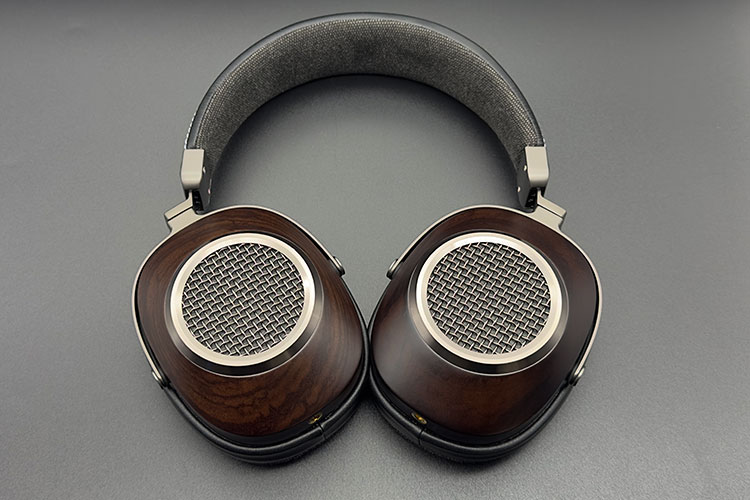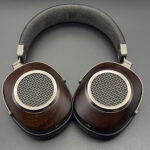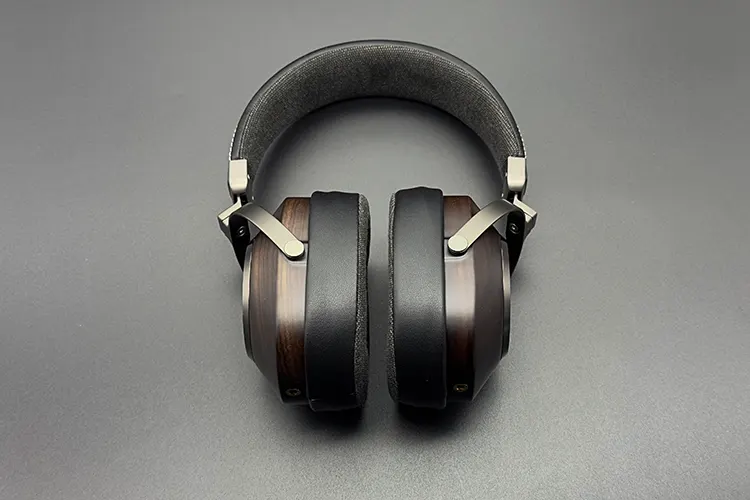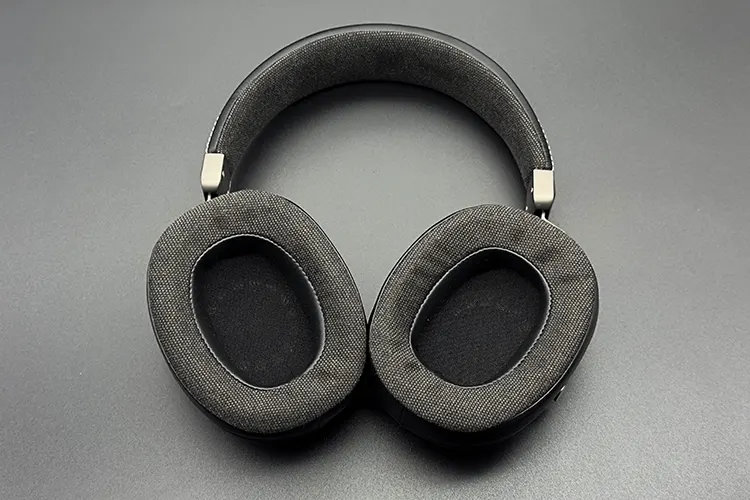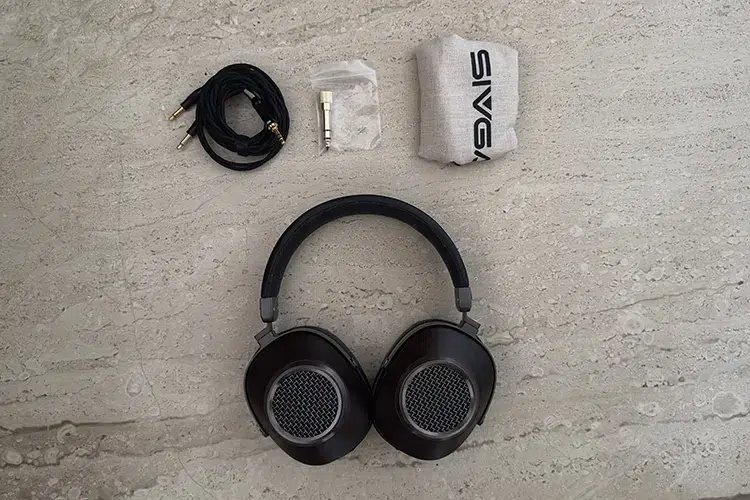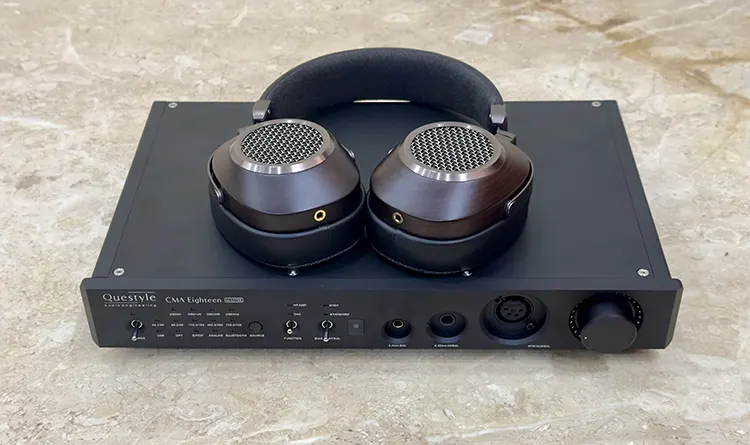Today’s feature is Nihal’s review of the new SIVGA Anser, a titanium-plated 50mm dynamic driver set of wood-finished open-back headphones. They are priced at $199.
Disclaimer: This sample was sent to me in exchange for my honest opinion. Headfonics is an independent website with no affiliate links or status. I thank SIVGA for their support.
Click here to learn more about SIVGA products previously reviewed on Headfonics.
Note that this article follows our latest scoring guidelines which you can read in more detail here.
SIVGA, a brand from China, dates back to 2016. The brand has a wide variety of products under its belt, from headphones to IEMs, mostly catering to the budget to mid-tier segment with a focus on artistry and the price-to-performance ratio.
The headphones offered by SIVGA have seen positive reviews from enthusiasts. One cannot deny their headphones such as the SIVGA SV023, a single dynamic driver open-back headphone.
ANSER is the latest headphone release from the brand and sits above their budget offering, the Robin SV021. In this review, I will assess the performance of the ANSER and how it compares with headphones such as the Sennheiser HD 600 and the HD 660S2.
Features
The ANSER features a 50mm dynamic driver at its core. The in-house-built driver has a composite cone design, combining different materials to leverage their best qualities.
The dynamic driver diaphragm features titanium plating for lightweight, rigid, and elastic performance.
In addition to this, the dome is made of a high-molecular organic carbon fiber polymer to absorb and effectively suppress extra vibrations. This is a similar design principle followed on other SIVGA headphones featuring dynamic drivers such as the SV023.
Design
SIVGA has done an excellent job with the ANSER’s build and design. It boasts one of the best aesthetics in its price segment.
The soft headband, paired with wooden earcups and metal components throughout the body, gives it a premium and well-constructed look. The metal parts feature a smooth texture and are painted in a subtle grey tone.
The earcups, finished in a rich wooden hue, are crafted from carefully selected premium solid wood. The drivers are protected by a thin fabric cover for added durability.
The headband is covered in soft leather on top, with a plush foam lining underneath for comfort. A white stitching detail runs along both sides of the headband, adding a nice touch.
The ear pads are made of leather and lined with a skin-friendly, soft velvet-like material for enhanced comfort.
Comfort
I am very particular regarding headphone fitting, and surprisingly, the ANSER has a very comfortable fit.
Weighing at 340 grams, I do not feel any pressure when wearing them. They are comfortable, and the weight is evenly distributed, so they don’t exert much pressure even when worn for extended periods.
Another major factor contributing to their comfort is the soft ear pads, which are neither too big nor too small, providing ample space for the ears to fit.
The soft velvet fabric remains comfortable even during long usage. The minimal clamping force ensures the ears aren’t pressed too much, significantly enhancing the comfort factor.
The ear cups can swivel a full 180 degrees, offering better handling, and the headband features a smooth sliding mechanism, making it easy to adjust the position while wearing the headphones.
Isolation from external noise, as one would expect, is not very strong but once you have music playing, it’s just fine.
Overall, I can’t think of a more comfortable pair of headphones in this price range that is lightweight and gentle on the head and ears.
Stock Cable
The stock cable is simple yet functional, doing its job well. It features a 3.5mm termination, though I wish there were a 4.4mm termination option for slightly better performance. However, considering the price point, I can’t complain too much.
The cable is fairly long and braided in black fabric, giving it a clean look. It’s not very thick and has a soft, flexible build. Thankfully, it doesn’t tangle much, which is a relief given its length or it could otherwise be quite bothersome.
That said, the long cable can become inconvenient if you’re moving around while wearing the headphones. SIVGA has included a 6.35mm adapter, in case someone wants to connect to dedicated amps and professional audio equipment.
Packaging & Accessories
The SIVGA ANSER headphones come in minimalist packaging. They arrive in a nicely built box that is both lightweight and compact.
The box features the brand logo and a simple design that mimics the headphone design. Upon opening the box, you’ll find the headphones neatly placed in a foam cutout, with the accessories organized in a smaller compartment.
Unfortunately, a carrying case is not included; instead, you get a carry pouch. Considering the price, I don’t find this a major issue.
The accessories with the ANSER include:
- Headphones
- Carrying pouch
- Stock cable 3.5mm terminated
- Cable adapter (3.5mm to 6.3mm)
Sound Impressions
The following sound impressions of the SIVGA ANSER were completed using a mixture of my main source, Lotoo’s Paw Gold Touch, the Earmen Angel, and Questyle CMA18 Master. For the review, I paired the headphones with stock cable.
Summary
SIVGA ANSER delivers a balanced sound signature, with no particular frequency overpowering the mix. It provides a solid bass response, a forward midrange that brings vocals closer to the ears, and a detailed treble with decent energy throughout.
As SIVGA highlights and I agree, this sound profile is particularly suited for genres like electronic dance music, pop, hip-hop, or anything that benefits from a strong bassline and clear vocals.
The sound signature strikes a fine balance between analytical and musical qualities, offering plenty of detail alongside a clean, natural, and musical sound, flavored with a touch of warmth.
Bass
The bass is one of the strong aspects of the tuning. While the ANSER does not offer a very refined or textured bass, it is still quite satisfying.
The bass is impactful and keeps the mix clean by not interfering with the higher frequencies. I particularly like the sub-bass region, which provides a nice rumble and has good depth.
Although it has a good body and impact, the mid-bass could benefit from a bit more punch. I also find the bass nicely controlled around the edges, without excessive boominess or distortion.
The bass is fast and well-controlled, with a quick decay that still gives a subtle sense of lingering dynamic-driver decay.
Its texture and layering are decent, and on complex tracks with multiple bass lines, the ANSER performs reasonably well. However, don’t expect a highly layered or refined bass response.
If you’re looking for a solid dose of bass where the fun elements aren’t compromised, the ANSER delivers just enough. While it may not fully satisfy bassheads, the bass does add an element of excitement. This makes ANSER suitable for a wide variety of music.
Mids
I have to commend how clean and natural the midrange on the ANSER is. This is partly due to the non-intrusive bass shelf, which complements the overall presentation.
The midrange takes a slightly neutral approach and doesn’t come across as overly warm. There is plenty of detail on offer, combined with a rich tonality.
A subtle touch of warmth and a slight emphasis on the upper midrange provides a good balance of energy and extension, keeping the midrange engaging.
The lower midrange exhibits a pleasant thickness, giving instruments and vocals a full-bodied presentation. Vocals feel intimate and close to the ears. I particularly enjoy female vocals on the ANSER, as the upper midrange imparts a lively and vibrant quality.
While the upper midrange focus adds a sense of openness and excitement, it can occasionally feel slightly sharp on certain sources—though not to the extent of being off-putting.
Treble
The treble range on ANSER is detailed, well-extended, and complements the other frequency ranges effectively. You get a fatigue-free, relaxed treble definition that hits the right spot.
While there is a slightly energetic upper midrange-to-treble profile, it adds a sense of excitement without being overwhelming. There’s plenty of air and a good sense of clarity and openness. The high-frequency region delivers enough detail, particularly in sounds like cymbals and hi-hats.
The treble region is free from any peaks or exaggerations, maintaining a smooth character ideal for long listening sessions. Treble enthusiasts may occasionally find the presentation less energetic, but there’s not much to miss here.
The notes are well-defined and presented with minimal overlap though in complex passages of certain tracks, I feel that clarity and separation could be slightly improved.
Staging & Dynamics
I find the technical capabilities of the ANSER to be above average. The soundstage is somewhat restricted in width, but I find the depth satisfying.
It’s more centered and closed, lacking a sense of width and height. I miss the large, holographic stage presentation, so the sound isn’t particularly immersive. Instruments don’t spread far and wide; instead, they feel more intimate.
A bit more expansion in the stage presentation would have added openness to the sound. Imaging is still quite good, and instrument positioning is precise. The layering and instrument separation isn’t exceptional, as on some complex tracks, I find the instruments feeling cramped for space.
While it may not match the mid-fi territory, I find the resolution satisfying, as the ANSER brings out details effectively. The clean midrange helps convey the nuances in vocals, instruments, and micro-details quite well.
It does a good job at capturing both micro dynamics, with subtle volume shifts and delicate details, and macro dynamics, bringing out impactful transitions and larger shifts.
Click on page 2 below for my recommended pairings and selected comparisons.

